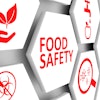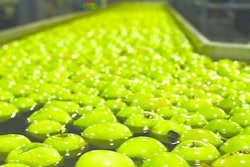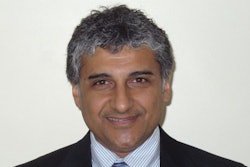Hanford, CA: Food safety experts downplayed the risk of mad cow disease entering the US food supply Wednesday.
"What we know is that 3,000 Americans die every year from preventable food-borne illnesses that are not linked" to mad cow disease, said Sarah Klein of the consumer advocacy group Center for Science in the Public Interest. "Things like E. coli, salmonella — that's where we should be focusing our attention, outrage and policy."
"From simply a public health issue, I put it very, very low," Cornell University food safety expert Martin Wiedmann said of the level of concern about mad cow disease. Maintaining confidence in exports fuels the nation's monitoring of the beef supply as much as continuing safety concerns, he said.
On Tuesday, federal agriculture officials announced the findings that the animal had atypical bovine spongiform encephalopathy (BSE). That means it didn't get the disease from eating infected cattle feed, said John Clifford, the Agriculture Department's chief veterinary officer.
It was "just a random mutation that can happen every once in a great while in an animal," said Bruce Akey, director of the New York State Veterinary Diagnostic Laboratory at Cornell University. "Random mutations go on in nature all the time."
The disease cannot be transmitted by contact among cows, and experts say it's unclear whether this rare type of BSE ever has been transmitted from a cow to a human by eating meat.
The California Department of Public Health and the state Department of Food and Agriculture quickly worked to assure consumers that the food supply is safe — and that the cow hadn't been destined for human consumption. The building where the cow was selected to be tested sends animals to a rendering plants, which process animal parts for products not going into the human food chain, such as animal food, soap, chemicals or other household products.
Among the unknowns about the current case is whether the animal died of the disease and whether other cattle in its herd are similarly infected. The name of the dairy where the cow died hasn't been released and officials haven't said where the cow was born.
"It's appropriate to be cautious, it's appropriate to pay attention and it's appropriate to ask questions, but now let's watch and see what the researchers find out in the next couple of days," said James Culler, director of the UC Davis dairy food safety laboratory and an authority on BSE.
The National Cattlemen's Beef Association said in a statement that "US regulatory controls are effective, and that U.S fresh beef and beef products from cattle of all ages are safe and can be safely traded due to our interlocking safeguards."
The infected cow was identified through an Agriculture Department surveillance program that tests about 40,000 cows a year for the fatal brain disease.
There have been three confirmed cases of BSE in cows in the United States — in a Canadian-born cow in 2003 in Washington State, in 2005 in Texas and in 2006 in Alabama. Both the 2005 and 2006 cases were also atypical varieties of the disease, USDA officials said.
The mad cow cases that plagued England in the early 1990s were caused when livestock routinely were fed protein supplements that included ground cow spinal columns and brain tissue, which can harbor the disease.
The Agriculture Department is sharing its lab results with international animal health officials in Canada and England who will review the test results, Clifford said. Federal and California officials will further investigate the case. He said he did not expect the latest discovery to affect beef exports.
State and federal agriculture officials plan to test other cows that lived in the same feeding herd as the infected bovine, said Michael Marsh, chief executive of Western United Dairymen, who was briefed on the plan. They also plan to test cows born at around the same time the diseased cow was.

















